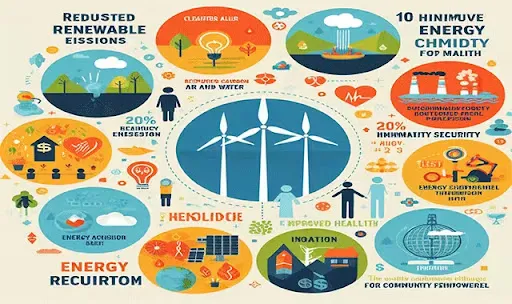The most important factors of renewable energy
Renewable energy is the energy that comes from natural sources that are constantly replenished, such as wind, solar, hydro, biomass and geothermal. Renewable energy has many benefits for the environment, the economy and society, such as reducing greenhouse gas emissions, creating jobs and enhancing energy security. However, renewable energy also faces some challenges, such as intermittency, cost and infrastructure. In this blog post, we will discuss some of the most important factors of renewable energy and how they can be addressed to achieve a sustainable and clean energy future.
Factor 1: Intermittency
Intermittency refers to the variability and unpredictability of renewable energy sources, such as wind and solar, that depend on weather conditions and time of day. Intermittency can pose a challenge for the stability and reliability of the power grid, as well as for the integration of renewable energy into the existing energy system. To overcome this challenge, several solutions can be implemented, such as:
- Energy storage: Energy storage technologies, such as batteries, pumped hydro, flywheels and hydrogen, can store excess renewable energy when it is available and release it when it is needed. Energy storage can help balance supply and demand, smooth out fluctuations and provide backup power in case of outages.
- Demand response: Demand response is a strategy that involves adjusting the electricity consumption of consumers in response to the availability and price of renewable energy. Demand response can help reduce peak demand, increase flexibility and efficiency and lower electricity costs for consumers.
- Smart grid: Smart grid is a network of intelligent devices and systems that can monitor, communicate and control the flow of electricity from various sources, including renewable energy. Smart grid can help optimize the operation and performance of the power grid, enhance grid security and resilience and enable more distributed and decentralized generation.
Factor 2: Cost
Cost is another factor that affects the adoption and deployment of renewable energy. Although the costs of renewable energy technologies have declined significantly in recent years due to technological innovation, economies of scale and policy support, they are still higher than those of conventional fossil fuels in some cases. Moreover, renewable energy projects often require high upfront capital investment and face higher risks and uncertainties than fossil fuel projects. To reduce the cost gap and increase the competitiveness of renewable energy, several measures can be taken, such as:
- Subsidies and incentives: Subsidies and incentives are financial mechanisms that aim to encourage the development and deployment of renewable energy by lowering its cost or increasing its revenue. Subsidies and incentives can take various forms, such as feed-in tariffs, tax credits, grants, loans and guarantees.
- Carbon pricing: Carbon pricing is a policy instrument that puts a price on the carbon emissions associated with fossil fuels, reflecting their environmental and social costs. Carbon pricing can create a level playing field for renewable energy by making fossil fuels more expensive and less attractive.
- Innovation: Innovation is a key driver for reducing the costs and improving the performance of renewable energy technologies. Innovation can be fostered by investing in research and development (R&D), supporting demonstration projects, facilitating technology transfer and diffusion and enhancing collaboration among stakeholders.
Factor 3: Infrastructure
Infrastructure is another crucial factor for the success of renewable energy. Renewable energy requires adequate infrastructure to connect it to the power grid, transport it to the end-users and integrate it with other energy sources. However, many countries lack sufficient infrastructure to accommodate the growing share of renewable energy in their energy mix. For instance, some regions may have insufficient transmission lines or interconnections to transmit renewable electricity from remote areas to load centers. Some countries may also have outdated or incompatible grid codes or standards that hinder the integration of variable renewable energy sources. To address these challenges, some possible actions are:
- Grid expansion: Grid expansion involves building new transmission lines or upgrading existing ones to increase the capacity and reach of the power grid. Grid expansion can help connect more renewable energy sources to the grid, reduce congestion and losses and improve regional cooperation.
- Grid modernization: Grid modernization involves updating or replacing old or obsolete equipment or systems with more advanced or compatible ones to improve the functionality and efficiency of the power grid. Grid modernization can help accommodate more variable renewable energy sources, improve grid stability and quality and enable more active participation of consumers.
- Grid integration: Grid integration involves optimizing the operation and planning of the power grid to harmonize different energy sources, including renewable energy. Grid integration can help balance supply and demand, manage variability and uncertainty and ensure system security.
Conclusion
Renewable energy is a vital component of a sustainable and clean energy future. However, it also faces some challenges that need to be overcome by addressing some of the most important factors of renewable energy, such as intermittency, cost and infrastructure. By implementing various solutions for these factors, we can enhance the potential and benefits of renewable energy for our environment, economy and society.

